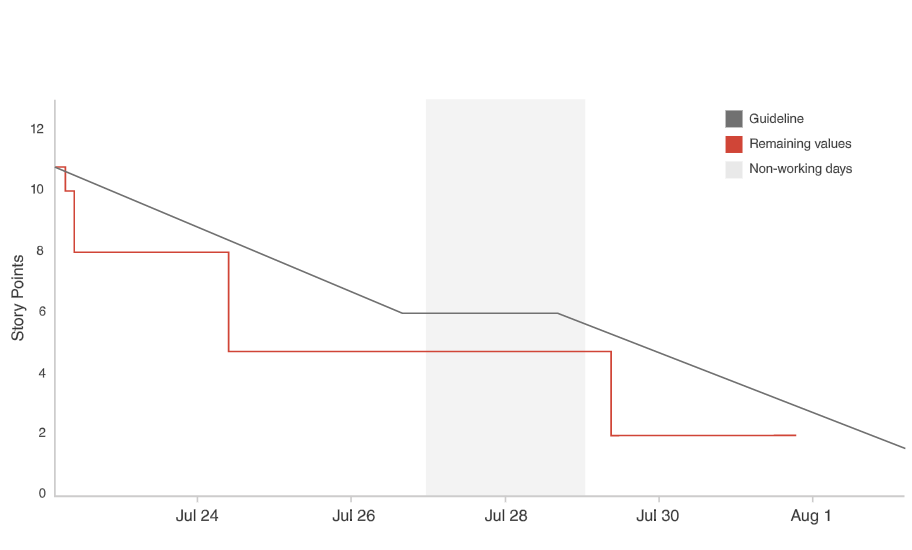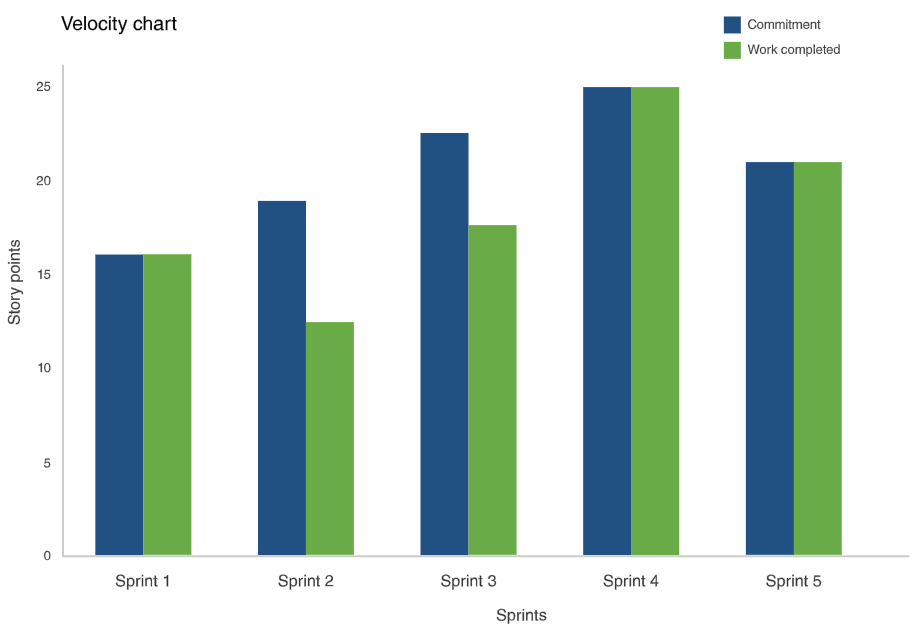Scrum cheat sheet
Scrum is a management framework for incremental product development using one or more cross-functional, self-organizing teams of about seven people each. It provides a structure of roles, meetings, rules, and artifacts. Teams are responsible for creating and adapting their processes within this framework. Scrum uses fixed-length iterations, called Sprints, which are typically 1-2 weeks long (never more than 30 days). Scrum teams attempt to build a potentially shippable (properly tested) product increment every iteration.
Concepts
Roles
There are three core roles in the scrum framework. These core roles are those committed to the project in the scrum process; they are the ones producing the product (objective of the project). They represent the scrum team. Although other roles may be encountered in real projects, scrum does not define any team roles other than those described below.
Product owner
The product owner represents the stakeholders and is the voice of the customer, who is accountable for ensuring that the team delivers value to the business. The product owner writes (or has the team write) customer-centric items (typically user stories), ranks and prioritizes them, and adds them to the product backlog. Scrum teams should have one product owner, this role should not be combined with that of the scrum master. The product owner should be on the business side of the project, and should never interfere or interact with team members on the technical aspects of the development task.
Scrum master
Scrum is facilitated by a scrum master, who is accountable for removing impediments to the ability of the team to deliver the product goals and deliverables. The scrum master is not a traditional team lead or project manager, but acts as a buffer between the team and any distracting influences. The scrum master ensures that the scrum process is used as intended. The scrum master helps ensure the team follows the agreed scrum processes, often facilitates key sessions, and encourages the team to improve. The role has also been referred to as a team facilitator or servant-leader to reinforce these dual perspectives.
Development team
The development team is responsible for delivering potentially shippable increments (PSIs) of product at the end of each sprint (the sprint goal). A team is made up of 3–9 individuals who do the actual work (analyse, design, develop, test, technical communication, document, etc.). Development teams are cross-functional, with all of the skills as a team necessary to create a product increment. The development team in scrum is self-organizing, even though there may be some level of interface with project management offices (PMOs).
Workflow
A sprint (or iteration) is the basic unit of development in scrum. The sprint is a timeboxed effort; that is, it is restricted to a specific duration. The duration is fixed in advance for each sprint and is normally between one week and one month, with two weeks being the most common. Each sprint starts with a sprint planning event that aims to define a sprint backlog, identify the work for the sprint, and make an estimated commitment for the sprint goal. Each sprint ends with a sprint review and sprint retrospective, that reviews progress to show to stakeholders and identify lessons and improvements for the next sprints. Scrum emphasizes working product at the end of the sprint that is really done. In the case of software, this likely includes that the software has been integrated, fully tested, end-user documented, and is potentially shippable.
Sprint Planning
During the sprint planning meeting, the product owner describes the highest priority features to the team. The team asks enough questions that they can turn a high-level user story of the product backlog into the more detailed tasks of the sprint backlog.
The product owner doesn't have to describe every item being tracked on the product backlog. A good guideline is for the product owner to come to the sprint planning meeting prepared to talk about two sprint's worth of product backlog items. To make an example really simple, suppose a team always finishes five product backlog items. Their product owner should enter the meeting prepared to talk about the top 10 priorities.
Whats the outcome of the Sprint Planning?
There are two defined artifacts that result from a sprint planning meeting:
The sprint goal
The sprint goal can be used for quick reporting to those outside the sprint. There are always stakeholders who want to know what the team is working on, but who do not need to hear about each product backlog item (user story) in detail.
The sprint backlog
The sprint backlog is the other output of sprint planning. A sprint backlog is a list of the product backlog items the team commits to delivering plus the list of tasks necessary to delivering those product backlog items. Each task on the sprint backlog is also usually estimated.
Who attends to the Sprint Planning?
- Product owner
- Scrum master
- Development team
Daily scrum
The Daily Scrum is a 15-minute time-boxed event for the Development Team to synchronize activities and create a plan for the next 24 hours. This is done by inspecting the work since the last Daily Scrum and forecasting the work that could be done before the next one. The Daily Scrum is held at the same time and place each day to reduce complexity. During the meeting, the Development Team members explain:
- What did I do yesterday that helped the Development Team meet the Sprint Goal?
- What will I do today to help the Development Team meet the Sprint Goal?
- Do I see any impediment that prevents me or the Development Team from meeting the Sprint Goal?
What's the outcome of the Daily Scrum?
- An updated scrum board to improve visibility of the progress.
- A list of blockers or impediments that need to be deal with by the Scrum Master.
Who attends to the Daily Scrum?
- Scrum master
- Development team
Sprint review
A Sprint Review is held at the end of the Sprint to inspect the Increment and adapt the Product Backlog if needed. During the Sprint Review, the Scrum Team and stakeholders collaborate about what was done in the Sprint. Based on that and any changes to the Product Backlog during the Sprint, attendees collaborate on the next things that could be done to optimize value. This is an informal meeting, not a status meeting, and the presentation of the product increment is intended to elicit feedback and foster collaboration.
What's the outcome of the Sprint Review?
- A progress status report
- An update from the product vision and feedback given by the Product Owner and stakeholders
Who attends to the Sprint Review?
- All the Scrum Team including the Product Owner
- Stakeholders may attend as well
Sprint Retrospective
The Sprint Retrospective is an opportunity for the Scrum Team to inspect itself and create a plan for improvements to be enacted during the next Sprint. The Sprint Retrospective occurs after the Sprint Review and prior to the next Sprint Planning.
This is a three-hour time-boxed meeting for one-month sprints. For shorter sprints, the event is usually shorter. The Scrum Master ensures that the event takes place and that attendants understand its purpose. The Scrum Master teaches all to keep it within the time-box. The Scrum Master participates as a peer team member in the meeting from the accountability over the Scrum process.
What's the outcome of the Sprint Retrospective?
- A detailed plan to continuosly improve the work process
- A status report of completed action items in the continous improvement plan since last restrospective
Who attends to the Sprint Review?
- The Scrum Master
- The Development Team
Metrics
Sprint burndown
Scrum teams organize development into time-boxed sprints. At the outset of the sprint, the team forecasts how much work they can complete during a sprint. A sprint burndown report then tracks the completion of work throughout the sprint. The x-axis represents time, and the y-axis refers to the amount of work left to complete, measured in either story points or hours. The goal is to have all the forecasted work completed by the end of the sprint.
A team that consistently meets its forecast is a compelling advertisement for agile in their organization. But don't let that tempt you to fudge the numbers by declairing an item complete before it really is. It may look good in the short term, but in the long run only hampers learning and improvement.

Anti-patterns to watch for
- The team finishes early sprint after sprint because they aren't committing to enough work.
- The team misses their forecast sprint after sprint becase they're committing to too much work.
- The burndown line makes steep drops rather than a more gradual burndown because the work hasn't been broken down into granular pieces.
- The product owner adds or changes the scope mid-sprint.
Velocity
Velocity is the average amount of work a scrum team completes during a sprint, measured in either story points or hours, and is very useful for forecasting. The product owner can use velocity to predict how quickly a team can work through the backlog, because the report tracks the forecasted and completed work over several iterations–the more iterations, the more accurate the forecast.
Let's say the product owner wants to complete 500 story points in the backlog. We know that the development team generally completes 50 story points per iteration. The product owner can reasonably assume the team will need 10 iterations (give or take) to complete the required work.
It's important to monitor how velocity evolves over time. New teams can expect to see an increase in velocity as the team optimizes relationships and the work process. Existing teams can track their velocity to ensure consistent performance over time, and can confirm that a particular process change made improvements or not. A decrease in average velocity is usually a sign that some part of the team's development process has become inefficient and should be brought up at the next retrospective.

Anti-patterns to watch for
When velocity is erratic over a long period of time, always revisit the team's estimation practices. During the team's retrospective, ask the following questions:
- Are there unforeseen development challenges we didn't account for when estimating this work? How can we better break down work to uncover some of these challenges?
- Is there outside business pressure pushing the team beyond its limits? Is adherance to development best practices suffering as a result?
- As a team, are we overzealous in forecasting for the sprint?
Summary
Scrum’s roles, artifacts, events, and rules are immutable and although implementing only parts of Scrum is possible, the result is not Scrum. Scrum exists only in its entirety and functions well as a container for other techniques, methodologies, and practices.
Scrum does a strong emphasis on cross-functional teams, time-boxed and to-the-point meetings. Team motivation, trust and transparency are key aspects of it.